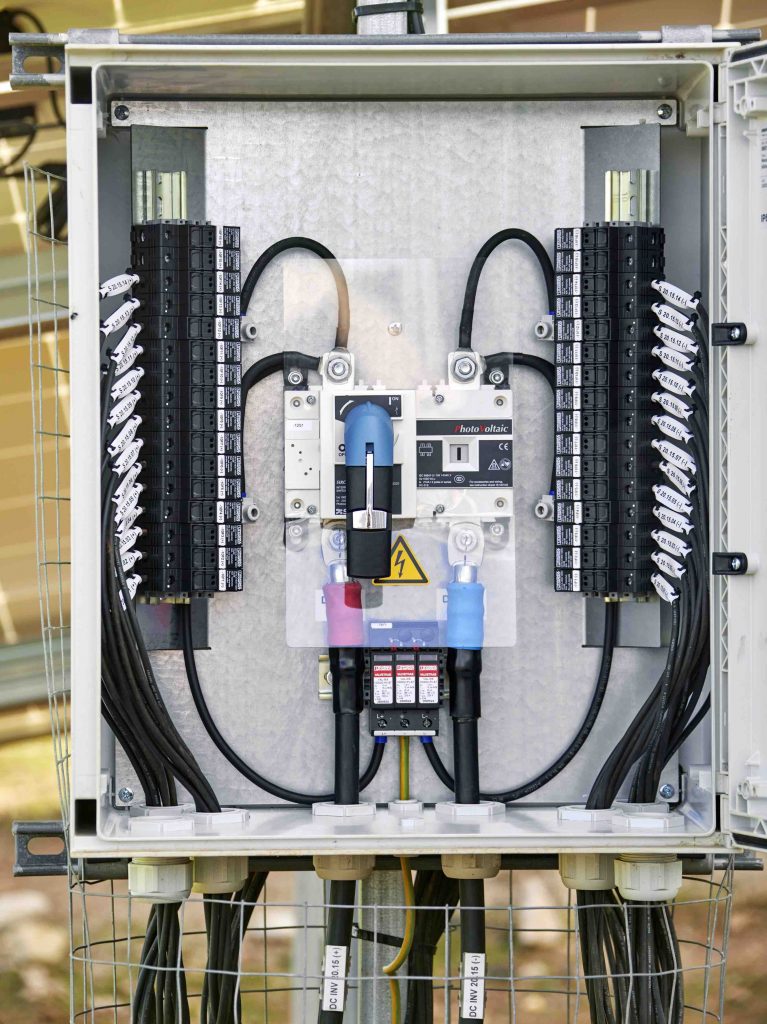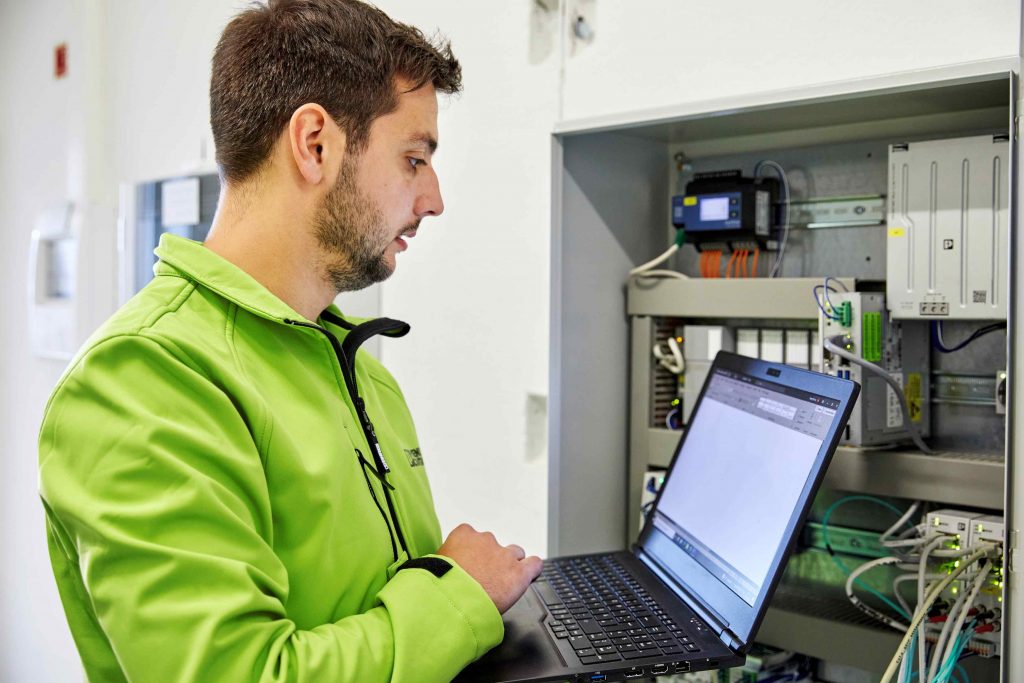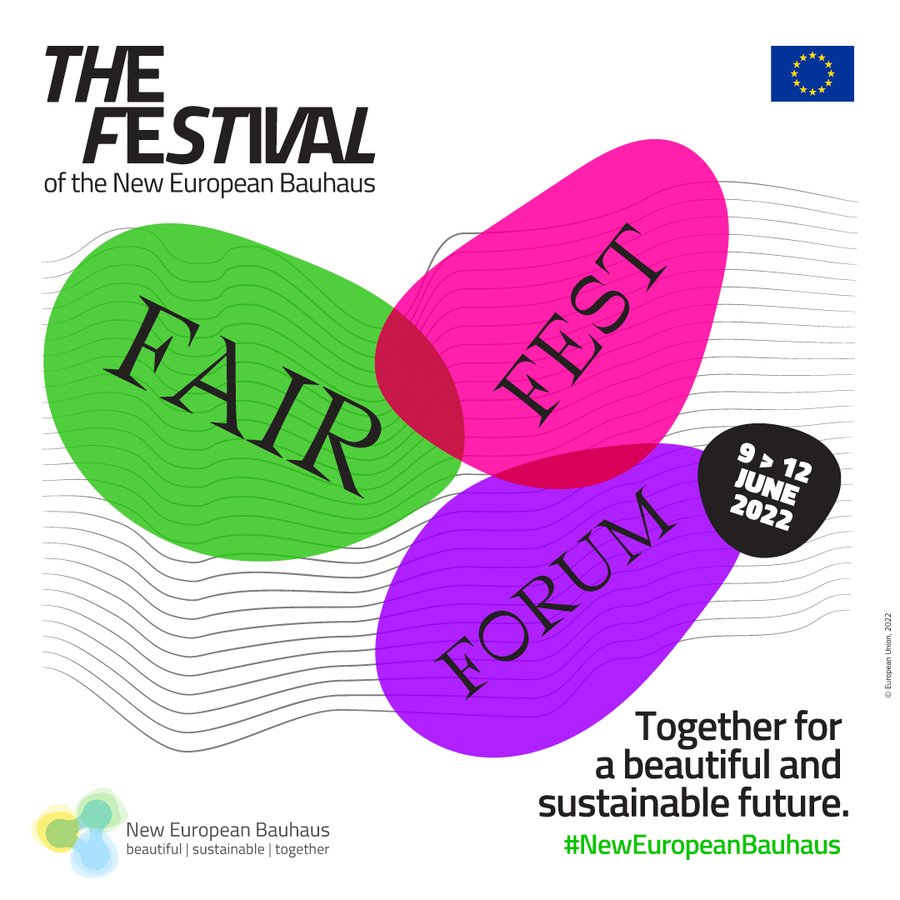Reliable and economical operation
Photovoltaics is doing its part toward meeting continually rising energy requirements. Interest in building increasingly larger and more powerful ground-mounted photovoltaic systems is on the rise worldwide, as in Portugal. Networking, monitoring, and communication are absolutely essential in this regard, particularly in relation to consistent network quality and maintenance in line with requirements.
According to the German Association of Energy and Water Industries (BDEW), over half of Portugal's electricity comes from renewable energies. A look at the installed capacities shows that hydropower and wind power play a key role above all, while photovoltaics (PV) are hardly used. This is currently changing significantly. By the end of 2021, ground-mounted systems with a total capacity of 1.7 GWp have been constructed in Portugal. Forecasts through 2030 project the construction of an additional 9 GWp. Wirtgen Invest Holding GmbH, headquartered in Neustadt (Wied) is one of the companies investing in Portugal for this. Wirtgen Invest built six photovoltaic systems in 2020 and 2021, with a total output of 195 MWp. Moura, the fifth park, was successfully connected to the grid in mid-2021. It is located in the southeast of Portugal near the Spanish border, and encompasses over 130,000 PV panels, generating a nominal power of 49.4 MWp. The photovoltaic system directly feeds into the power grid on the high-voltage level via a substation newly constructed on the grounds. The power is then marketed under a Power Purchase Agreement (PPA).
Complete and seamless solution
"An investment in the future" is how Jürgen and Stefan Wirtgen, the two General Managers of the holding, describe the large-scale PV project which they implemented alongside additional partners. These include WiNRG GmbH from Hamburg, which has been active in the area of renewable energies since 2005. The company's employees manage large projects and transactions involving wind and photovoltaics systems worldwide for their customers. The project team also includes project manager EPC Conecon GmbH, Zebotec GmbH as the system integrator for controlling and monitoring photovoltaic systems, and analytics software provider QOS Energy, together with Phoenix Contact. The automation specialist from Blomberg delivered the integrated PV park management for the six solar parks. Along with the neighboring photovoltaic systems Amareleja and Ferreira do Alentejo and the Cartaxo and Santarem parks north of Lisbon, as well as the Lagos plant in the Algarve, Moura produces over 325 million MWh of green power each year. This power supplies over 80,000 four-person households and saves 140,000 tons of CO2.
Smart automation technology from Phoenix Contact continuously records all data from the solar park, which is then analysed by the Asset Performance Management solution from QOS Energy. From data recording on the field level to feed-in control and visualisation, the Blomberg company provides WiNRG GmbH with a complete and seamless solution for solar park management. The integrated photovoltaic park management enables reliable and economical operation of the solar park.
Needs-based regulation of the inverter
Since the individual PV parks have a similar structure, the concept can be explained using the example of the plant in Moura. At total of 525 space-saving string combiner boxes (SCB) collect the currents from the 7350 PV strings and conduct them to the same number of SHP75 inverters from SMA. In the SCB, the DC cables are protected and secured against overvoltage. This is important because, due to their size and exposed location, ground-mounted systems are particularly at risk from lightning currents and overvoltage. Lightning current and surge protective devices from Phoenix Contact significantly improve the availability of the solar park. The devices fulfil EN 50539-11 and UL 1449, 3rd edition standards for surge protection in photovoltaic installations and are KEMA-certified. The SCB can be disconnected if maintenance is required so that service work can be carried out safely.

The AC voltages converted by the inverters are transferred to 20 transformer stations installed in the field, where they are transformed from 0.4 kV to 30 kV.
Before the solar power can be fed into the local power grid, transformers convert the collected AC voltages from 30 kV to 60 kV at the grid connection point. Measuring devices here record the grid parameters and communicate them to the central feed-in controller. Decentral power generation plants need to play their part in ensuring higher grid stability. For this purpose, the responsible grid operators specify the ranges to be maintained for the grid frequency and voltage as well as the reactive power in their grid connection conditions for photovoltaic systems. Regulators for power generation systems (PGP regulators) record the voltage and reactive power present at the grid connection points to check these values. The devices from Phoenix Contact then determine the respective control values on this basis and forward them to the inverters, which can be regulated if needed.

Fast commissioning of data loggers and environmental sensors
In addition to generating power, large solar parks like Moura produce large quantities of data that must be collected, processed, and analysed in order to then assess how economically the photovoltaic system is running. Because of this, there is a data logger on each of the 20 transformer stations. The devices work using an automatic detection mode, which is why all of the systems installed in the PV park can be easily connected via Plug and Play. Since this eliminates the need for configuration, startup time is reduced considerably. The inverter manager integrated in the data logger receives the data from the inverter via Ethernet, and transmits it to the AXC 1050 small-scale controller from the Axiocontrol product family, which is also installed there. In addition, the AXC 1050 collects data from the connected weather sensors.
A total of six weather stations are mounted in the Moura solar park, with 14 module temperature sensors, eight pyranometers, twelve reference cells, two wind direction sensors, two wind speed sensors, and two combination sensors for temperature, humidity, and air pressure. The environmental sensors from Phoenix Contact are directly connected to the control system via a Modbus protocol. Because the devices are preconfigured, they are immediately available to transmit weather data. Instead of individually wiring each sensor, the sensors are simply connected in series thanks to the M12 connections with Y distributors. This greatly reduces the amount of wiring required on site, and makes it easier to integrate the sensors into the overall system. As opposed to compact weather stations, the sensors available from Phoenix Contact are individual modules. So if a device fails, only this sensor needs to be replaced.
Simple forwarding of all data to the central park control
Using weather sensors allows an operator to draw conclusions regarding the power of the solar system – the so-called performance ratio (PR). This value is calculated using the ratio between the actual and target yield, whereas the actual yield is determined from the installed energy measuring devices. The pyranometer and reference cells, installed at the module level both horizontally and tilted by 25 degrees, provide information on the target yield. If the calculated performance ratio is too low, the operator can adjust the regulation accordingly. The data loggers also receive digital signals, which contain information on the transformer temperature and the status of the switching device. All data from the inverters, weather sensors, transformers, and switching device is transmitted via a redundant ring structure over fibre optic cables to a central park control located in the control room. Thanks to the open and flexible control platform from Phoenix Contact, forwarding to the Asset Performance Management Portal of QOS Energy is simple. The specific analyses, warnings, and reports resulting from the data then rationalise the work processes of the OEM service provider.

Architects, high-level European officials, and sustainability and construction experts will take to Brussels from 9 to 12 June for the first New European Bauhaus Festival.
The event will offer a chance to discuss and share ideas on how to build the cities of the future, reshaping the urban landscape with greener and more appealing structures. The festival is one of the pillars of the New European Bauhaus, an EU initiative inspired by the Green Deal marrying innovative architectural concepts with science, beauty and inclusivity.
After shunning nature for decades in favour of crowded buildings of metal and concrete, the New European Bauhaus is prompting architects to turn their gaze on trees, leaves and green spaces. It encourages experts to bring nature back into people’s daily lives and make it an integral part of the construction and urban spaces of the future.
“Beautiful. Sustainable. Together.”
The hybrid in-person and online Brussels gathering will be an invaluable opportunity for the community to look for a way forward, defining where the New European Bauhaus is heading and how to put ideas into practice.
The programme boasts a combination of talks, debates and workshops with cultural and artistic events, including performances, exhibits, installations, videos and live paintings.
Among the highlights is the 11 June ceremony that will crown the winners of this year’s New European Bauhaus prizes. The awards will celebrate inspiring projects and ideas that exemplify the New European Bauhaus’ core values.
Ursula von der Leyen, the European Commission President, will participate in the festival’s opening event emblematically titled ‘From local to global and back again’.
Debates will centre around ideas such as building liveable cities, transforming the urban landscape in times of global crisis and creating new structures under the New European Bauhaus’ motto: “Beautiful. Sustainable. Together.”
Mariya Gabriel, the European Commissioner for Innovation, Research, Culture, Education and Youth, will be among the EU officials in attendance.
For Gabriel, this will be yet another opportunity to contribute to the New European Bauhaus conversation – on 9 June, Gabriel will remotely join the Eurocities annual conference in Espoo where she will participate in a discussion on solutions and challenges for the creation of sustainable cities.
The war in Ukraine will also enter the Brussels event, with participants called to debate how to lead the country’s reconstruction. The idea is to combine sustainability, cultural heritage and inclusiveness in a hoped-for post-conflict era.

Walking the talk in cities
In introducing the New European Bauhaus in April 2021, von der Leyen called on local leaders to provide ideas to “make the European Green Deal tangible and palpable” and “add a cultural dimension to the economic and technological transformation”.
“Indeed, local governments are at the heart of the New Bauhaus project,” says Pietro Reviglio, Policy Advisor on Governance at Eurocities. “City administrations are becoming ambassadors of the initiative on the ground and are looking for opportunities to move from talk to action.” However, “for many cities, it will be important to be able to tap into incentives and funding opportunities to be able to sustain the initiative in the long-term,” Reviglio warns.
Cities will be actively engaged in the festival, with municipalities like Lille and Brussels – for example – co-organising a side event on “fruitful cooperation for shaping the New European Bauhaus.”
German-born global appeal
The New European Bauhaus’ name takes after the architecture, design and applied arts movement that first developed in Germany from 1919 to 1933.
Founded by architect Walter Gropius, the Bauhaus introduced a new style that favoured geometric, symmetric and asymmetric lines, a clean design emphasizing functionality and a no-frills approach in the post-World War I industrialized world. The new school was interdisciplinary and combined technology with architecture, arts, crafts and design.
Although the Nazis closed the Bauhaus school in 1933, its creators exported the movement to countries such as the United States and Israel, where it continued to creatively expand from its creators’ original ideas.
The aesthetic revolution that the Bauhaus set in motion was so groundbreaking that the movement continues to inspire countless architects, artists and designers to these days.
Today’s New European Bauhaus is the brainchild of the1920’s original movement.
When von der Leyen introduced the Commission-led initiative, she highlighted the defining principles of the New European Bauhaus: inclusivity, aesthetic and sustainability. With the addition of nature, this architectural style is now ready to enter the 21st century.


